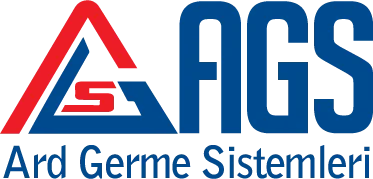History of Prestressed Concrete Technology
The first patent for prestressed concrete was issued to P.H. Jackson of San Francisco in 1886. However, modern development of prestressed concrete is usually attributed to Eugene Freyssinet of France. In 1928, Freyssinet began to use high-strength steel wire for prestressing concrete.
Earlier attempts at producing prestressed concrete using normal-strength reinforcement had been unsuccessful. After being precompressed, concrete continues to shorten with time in a process called creep. Shrinkage of the concrete due to loss of moisture over time also causes shortening. Creep and shrinkage together was cause the concrete to shorten nearly 0,1%. With lower-strength reinforcement, it is not possible to elongate the steel in the prestressing operation by more than about 0,15 %. Consequently, when lower-strength reinforcement is used to prestressed concrete about 2/3 of the prestressing in the reinforcement is lost due to shortening. High-strength steel wire, on the other hand, can be elongated about 0,7% in the prestressing operation. Even with the losses due to creep and shrinkage, over 80% of the prestressing remains. To further reduce losses due to creep and shrinkage and to make possible much higher levels of precompression, Freyssinet also recommended the use of higher-strength concrete.
By 1939, Freyssinet had designed conical wedges for anchoring the wires at the ends of prestressed members as well as special h-jacks for use in stressing and anchoring the wires. In 1940, Professor Gustave Magnel of Belgium developed a system of curved, multi-wire tendons in flexible rectangular ducts. Further development of post-tensioning was interrupted by World War II. However, the shortage of steel in the post-war years gave impetus to the use of prestressed concrete in replacing the war damaged bridges throughout much of Europe. Although France and Belgium led the development of prestressed concrete, England, Germany, Switzerland, Holland, Russia, and Italy quickly followed.
The first use of Post-Tensioning in the U.S was on the Walnut Lane Bridge in Philadelphia in 1949. This landmark bridge has precast girders post-tensioned with the Magnel system. The first post- tensioning in U.S. building construction was in the mid to late 1950s in buildings using the lift-slab construction method. The early development of the prestressed concrete industry in North America was predominantly oriented toward factory production of precast-prestressed elements for highway bridges. There were, however, many notable exceptions where post-tensioned prestressed concrete construction was utilized. In the 1960s, post-tensioned box girder bridges were widely used in California and other Western states. During the same period, the use of unbonded tendons for building floor system became more widespread. The use of post-tensioned nuclear containment also began in the 1960s. The 1970s saw the emergence of new applications, including the use of post- tensioned foundations for single and multi-family residences on expansive and compressible soils, and the use of prestressed rock and soil anchors for a variety of tie-back and tie-down structural applications.
When we look at the history and development of prestressing and post-tensioning in Turkey, unfortunately, the situation is far away from the situation in Europe and America. The first post- tensioning productions applied in Turkey, between 1985 - 1989, we can show a few bridge productions made by STFA İnşaat A.Ş. on Kınalı highway. Afterwards, it is possible to talk about prestressed precast applications and post-tensioning applications, especially in bridge constructions, but unfortunately it has never gained the identity of a construction technique in its own right as in the world. It has always been a secondary manufacturing technique in special structures with large spans.
However, when we look at the applications performed in the world, Post-Tensioning applications are especially preferred for many useful reasons.
The main ones are as follows; - For allowing wide openings to be crossed without support. - Due to the reduction in the amount of iron concrete, both economy, minimising the national wealth and minimising the damage to the environment. - Achieving high production speeds. - Reducing building loads with low slab thicknesses, thus making buildings more resistant to earthquakes. - Minimising the cracks in reinforced concrete elements and making them controllable. - Designing much more spacious, useful and qualified buildings in terms of architecture.



